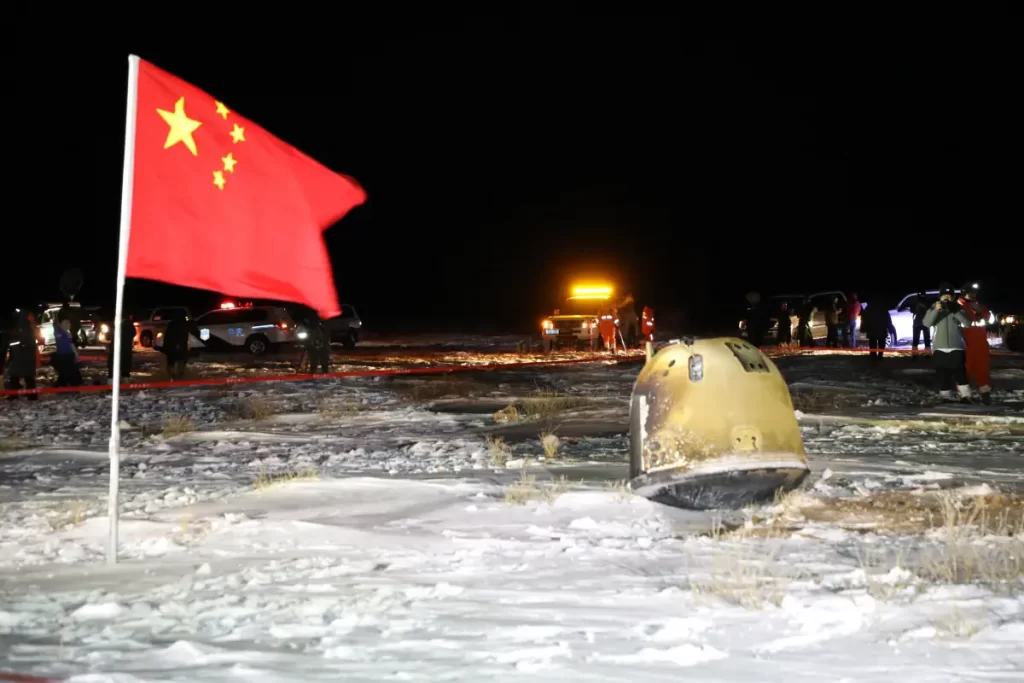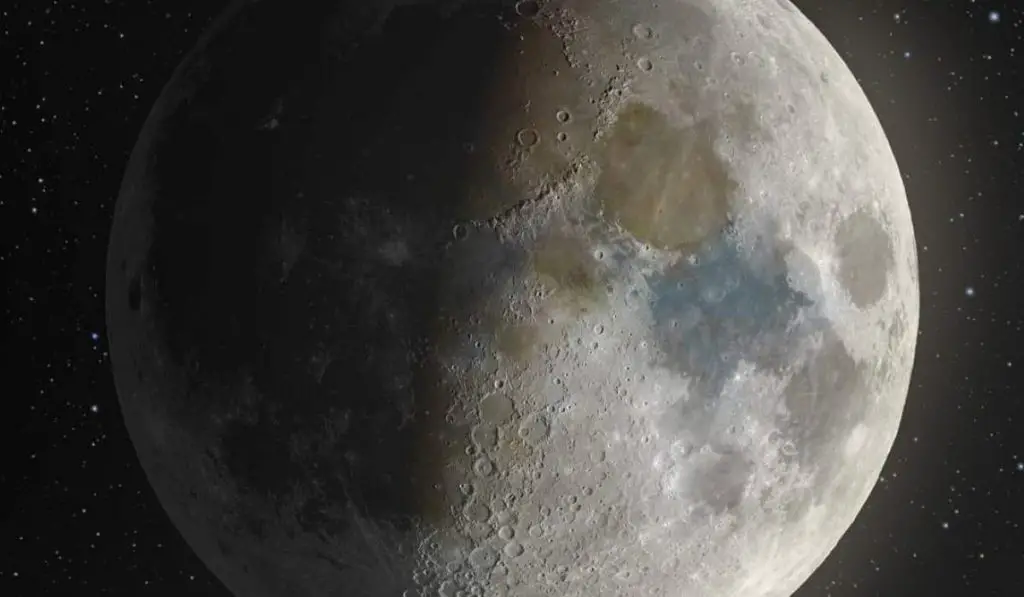Change-5 represents China’s first mission to return moon samples to Earth, hence marks a major step forward for China’s lunar exploration program. Now, recent analysis suggests that the Moon samples returned from Chang’e-5 tell of recent volcanism.
In recent years, China successfully landed several probes and rovers on the surface of the Moon as part of the country’s Lunar Exploration Program. Launched on November 23, 2020, and landed on the Moon on December 1, 2020, Chang’e 5 represented the next step as it had instruments to collect lunar samples: a drill bit to get underground samples a scooping device.
After sampling, the lunar samples have been transported to a container within the Ascender module. The Ascender launched from the lunar surface on December 3, 2020, and after an automatic lunar orbit rendezvous and docking with the Orbiter module, the samples were transferred to the lunar orbiter. The ascender crashed back on the Moon to avoid become space debris.
The Orbiter left the lunar orbit and spent about 4.5 days flying back to the Earth orbit and released the Returner (reentry capsule) just before arrival. The returner capsule landed on Earth on December 16, 2020, carrying 1,731 g (61.1 oz) of lunar samples.
These lunar samples were evaluated by a team led by Xiaochao Che from the Chinese Academy of Geological Sciences in Beijing. It turned out that these samples have enormous scientific meanings in terms of their abnormally young ages (<2.0 billion years old).

Chang’e-5 lunar samples are filling the void in lunar history
The Earth’s oldest rock was found on the moon: it was formed deep in the earth’s mantle around four and a half billion years ago before a protoplanet collided with the young earth and catapulted part of the molten rock into space, where the ejected material later formed the moon.
Most of the lunar rocks are generally very old, older than 4 billion years. The young ones can be found only where asteroids or comets have struck and they were formed less than a billion years ago.
The large gap in between is now being closed by rock samples brought by Chang’e-5.
The young ages of the Chang’e-5 lunar samples indicate that some areas of the Moon were still volcanically active until relatively recent times – far longer than previously assumed.
What triggered the Moon’s recent volcanic activity, however, is still unclear. The scientists found no evidence of increased concentrations of radioactive elements so that other causes must have triggered the activity. For example, tidal heating while the moon is orbiting the earth is an option, since the Moon was closer to Earth 2 billion years ago.
The distance between Earth and Moon was about 350,000 km (217,000 miles) 2 billion years ago. Now, it is about 384,400 km (238,855 miles).
Chang’e-5 lunar samples also can help scientists to improve the age dating of the entire Solar System since they provide an additional calibration point for estimating the surface ages of other Solar System bodies.
Deputy director of the China National Space Administration (CNSA), Wu Yanhua announced that the Chang’e 5 lunar samples will be shared with the UN and international partners for space research purposes.

Related: 10 Amazing Moon Facts
China’s Chang’e missions are named after Chang’e, the goddess of the Moon in Chinese mythology.
Notes
- Before Chang’e-5, the last lunar samples collected and returned to Earth in 1976 by the Soviet robotic probe Luna 24. It was the last of the Luna series of spacecraft of ther Soviet Union’s Luna Programme. Launched on August 9, 1976, Luna 24 set down safely on the lunar surface at 06:36 UTC on August 18, 1976. It returned 170.1 g (6.00 oz) of lunar samples to the Earth on August 22, 1976. So, the Chang’e 5 mission made China the third country to return samples from the Moon after the United States and the Soviet Union.
Sources
- Chang’e-5 on Wikipedia
- “Lunar samples returned by Chang’e-5 tell of recent volcanism” on Ars Technica
- Budget of NASA, Year by Year [1980-1989] - June 10, 2024
- Budget of NASA, Year by Year [1970-1979] - June 10, 2024
- Budget of NASA, Year by Year [1958-2024] - June 10, 2024

